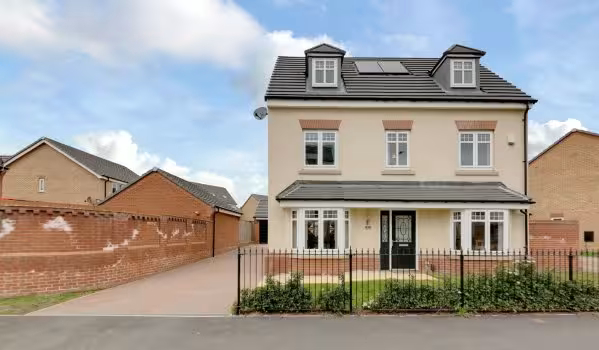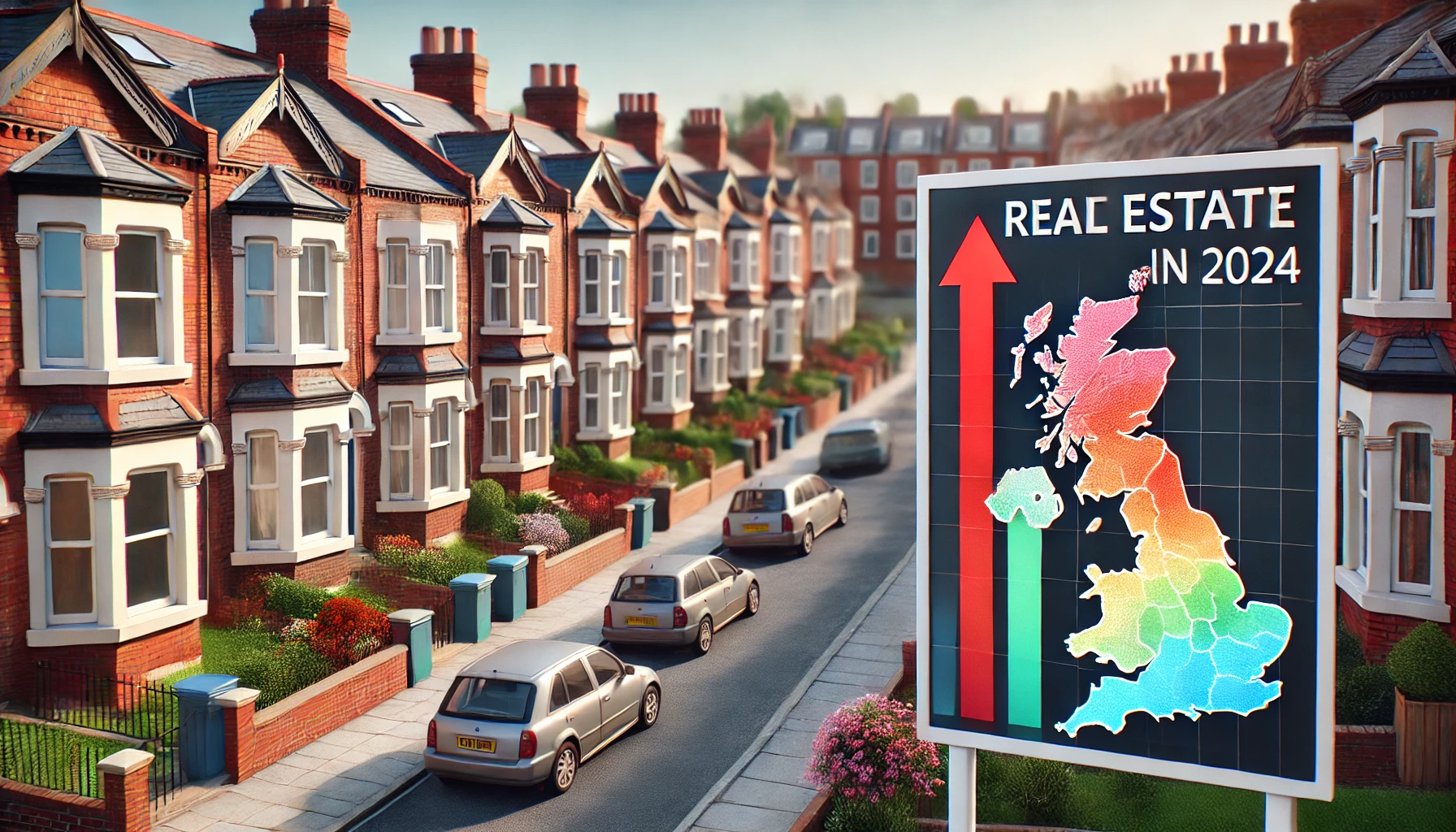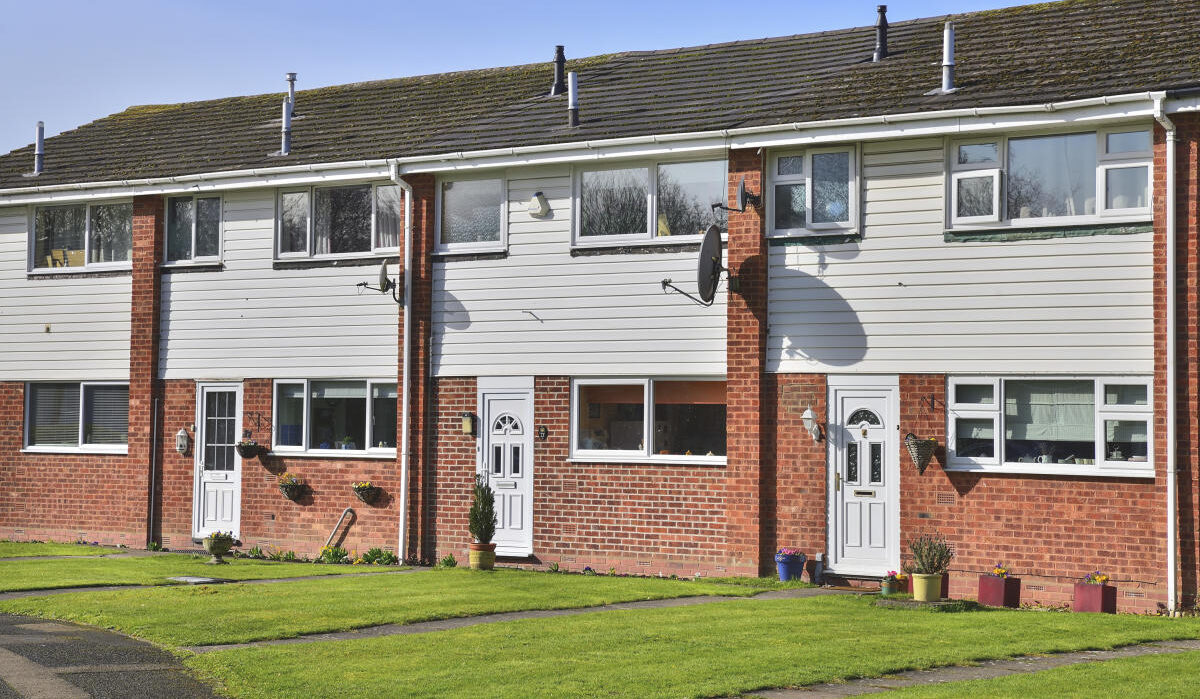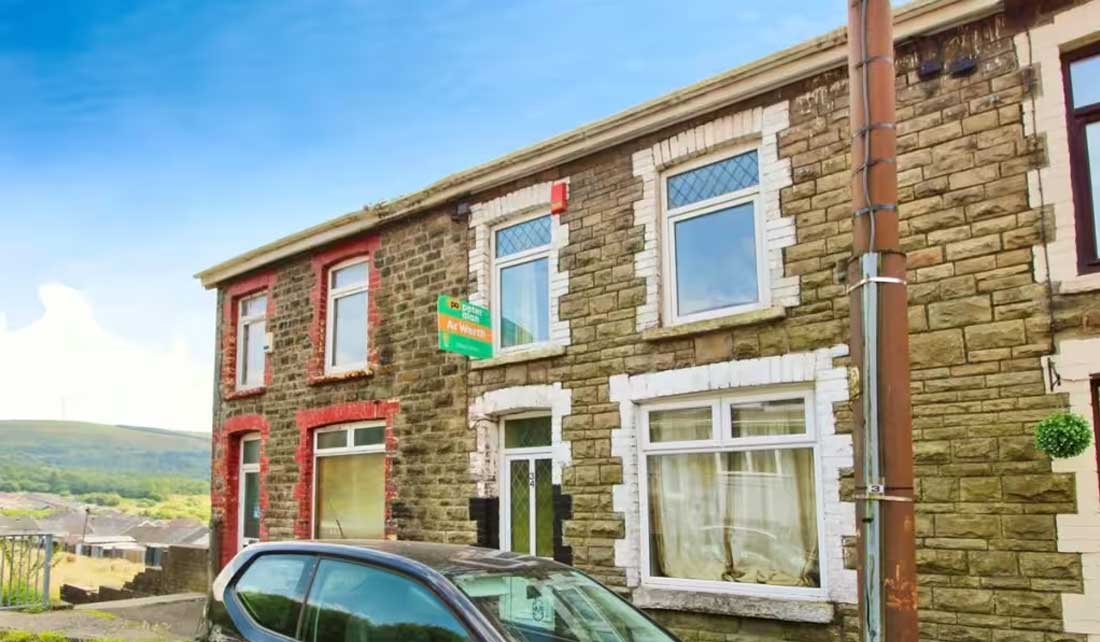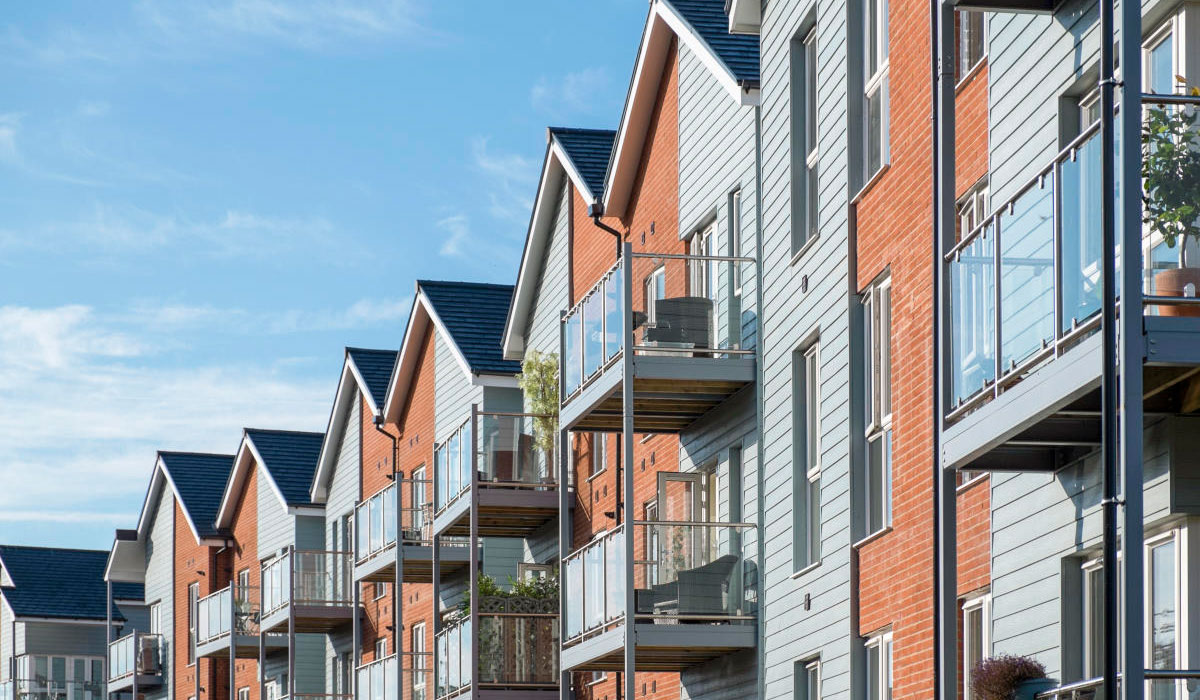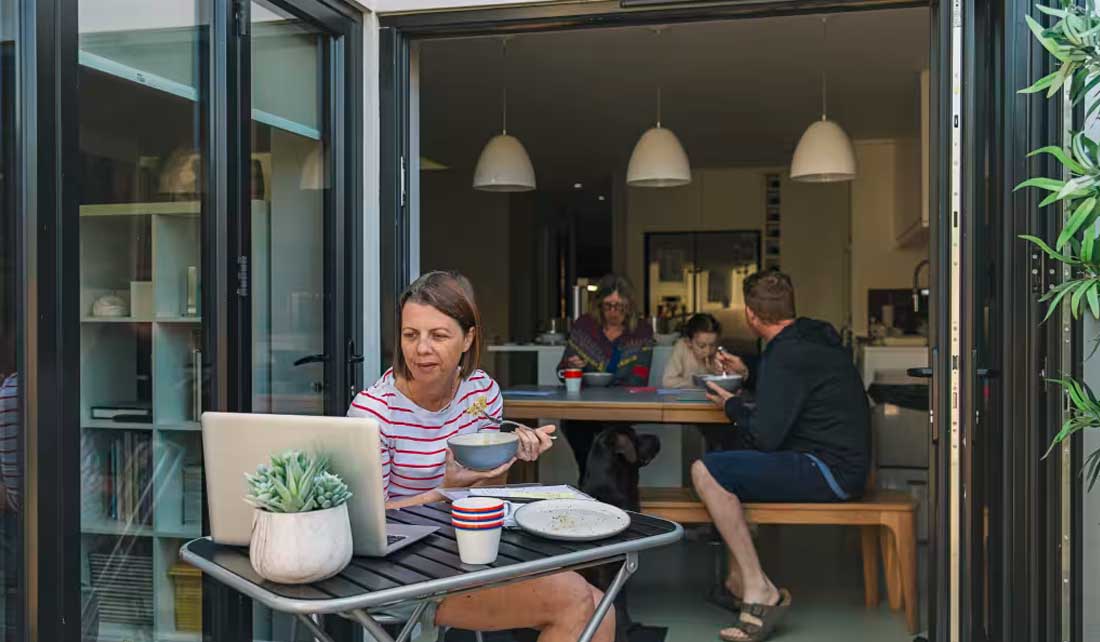Good News for Borrowers? Base Rate Cut to 4.5% Explained
How the 4.5% base rate could shape the property market and your mortgage.
The Bank of England has cut the base rate by 0.25% and it now stands at 4.5%.
The Bank's Monetary Policy Committee (MPC) voted by a majority of 7–2 to reduce the base rate by 0.25%, to 4.5%. Two members preferred to cut the rate by 0.5%, to 4.25%.
The MPC last met in December, when it voted by 6-3 to hold the base rate at 4.75%.
The base rate, also known as the 'bank rate' or the 'interest rate', is important because it influences the rates that lenders charge their borrowers for things like mortgages.
Why has the base rate been cut?
The Bank has been using the base rate as a way of taming inflation, which hit a recent peak of 11.1% in October 2022.
The Bank increased the base rate from 0.1% in late 2021, to 5.25% in August 2023. It then cut the rate twice last year, first in August and then again in November.
The good news is that inflation has recently dropped. The Consumer Prices Index (CPI), a key measure of inflation, stood at 2.5% in the year to December. While that’s still above the Bank’s 2% target, it’s edged down from 2.6% in the year to November. It’s the first decline in three months.
In its Monetary Policy Report today, the Bank said that inflation is “following a bumpy path”.
It explained: “We expect inflation to rise temporarily this year, to 3.7%, including because of higher energy prices. Inflation is expected to fall back again to the 2% target after that.
“We need to be confident that inflation will remain low and stable in a lasting way. The Monetary Policy Committee will decide carefully by how much and when it can cut interest rates.”
The report also warned that the economy “may not evolve as expected, including because there could be global shocks. For example, global trade tariffs or developments in the Middle East could impact some prices”.
Andrew Bailey, the Bank’s governor, took a cautious tone when the MPC held the base rate in December: “We think a gradual approach to future interest rate cuts remains right, but with the heightened uncertainty in the economy we can’t commit to when or by how much we will cut rates in the coming year,” he said at the time
What does the base rate cut mean for mortgage rates?
Borrowers with mortgages that track the base rate are set to see an almost immediate impact on their mortgage rates. Meanwhile borrowers on fixed-rate deals that expire soon are likely to see the lower base rate factored into new deals.
Richard Donnell, Executive Director of Zoopla, said: “Today’s cut to the base rate will provide a boost to market sentiment for home buyers, more than a boost to buying power.
“The path of base rates is already priced into fixed-rate mortgages, which account for the majority of new mortgages.
“It’s positive that 2025 is starting with lower mortgage rates than the last two years. The average five-year fixed rate at 75% LTV is 4.4% while a two-year fix is at 4.6% (according to Bank of England data).”
Hina Bhudia, partner, Knight Frank Finance, reacting to the Bank's Money & Credit data on 30 January, said that mortgage rates have been largely steady during the early weeks of the year - though a handful of lenders did reprice a little higher during recent bond market volatility.
“That volatility has since eased and we do expect lenders to cut mortgage rates as soon as they are able to do so. They have fresh lending targets at the beginning of the year and are eager to build market share,” explained Bhudia.
“If the Bank of England does opt to cut the base rate as many as five times this year, as Morgan Stanley analysts predicted this week, borrowers shouldn't be waiting long for a reprieve.”
In the past week, Barclays, Coventry Building Society, Yorkshire Building Society, Santander, TSB and Co-op have all cut mortgage rates, according to The Sun.
How could this impact the housing market more broadly?
Our latest House Price Index shows that the 2025 sales market has started off better than both 2024 and 2023. This bodes well for market activity throughout the rest of the year.
And today’s base rate decision has the potential to boost confidence and improve affordability, paving the way for more moves across the housing market.
“Greater stability in borrowing costs has brought more buyers and sellers back into the housing market having delayed moving decisions as rates spiked higher. The latest Zoopla data (to Sunday 4th February) shows a healthy supply of homes for sale and home buyer demand 9% higher than a year ago, with 11% more sales agreed,” explained Donnell.
“We expect average mortgage rates to remain in the 4-5% range over the year ahead. Lower base rates will support the wider economy which in turn, will support housing market activity where we expect 5% more housing sales over the year to 1.15m and average house price growth of 2.5%.”
Donnell added that the average mortgage rate for all outstanding mortgages has risen and now stands at 3.8% as borrowers refinance mortgages.
“The last of the ultra-low rate five-year fixes taken in 2021 will be refinancing in the next 18 months as the whole housing market sees mortgage rates resetting to current levels,” Donnell said.
Key takeaways
- The Bank of England has cut the base rate by 0.25%. It now stands at 4.5%
- The Bank's Monetary Policy Committee (MPC) voted by a majority of 7–2 to reduce the base rate by 0.25%, to 4.5%.
- The base rate, also known as the 'bank rate’ or the ‘interest rate’, influences the rates that lenders charge their borrowers
- Today’s decision comes after UK inflation fell to 2.5% in December. It was the first drop in the rate of inflation for three months
Smart Ways to Afford a New-Build Home
Did you know buying a new-build home can be more budget-friendly than an older property?
If you’re looking to move this year, you may have started to weigh up whether to buy a new-build home or an older property. There are many contributing factors to this decision, but a big one is affordability. And when it comes down to it, new builds win by a long way.
So let’s take a deeper look at this. What makes new builds the affordable option? And how can you make the most of your budget when buying a new home?
Buying schemes for first-time buyers and home movers
One of the biggest perks of new-build homes is the number of schemes and incentives available to buyers. For both first-time buyers and home movers, these initiatives can make all the difference when it comes to saving cash.
Some schemes you can take advantage of are:
-
Deposit Unlock: Buy a new home with a 5% deposit and dramatically reduce your upfront costs. This scheme is available to first-time buyers and home movers.
-
Own New - Rate Reducer: An initiative that can give you access to lower mortgage rates. It’s a regular mortgage that uses a developer incentive to lower monthly payments for the initial period. (This period depends on how much you earn and which lender you are matched with.) Rate Reducer enables you to access mortgage rates below 2.88%*, which could mean a potential saving of up to £304 on monthly repayments**. This scheme is available to first-time buyers and home movers.
-
Shared Ownership: Purchase a percentage of the property (typically between 25% and 75%) and pay rent on the remainder, making homeownership achievable on a smaller budget. This scheme is only available to first-time buyers.
-
Deposit contributions: Some developers will top up your deposit to help reduce the upfront cost of buying your home. This added support not only accelerates your home-buying journey but can also make you eligible for more competitive mortgage rates by increasing your deposit size. This is available to first-time buyers and home movers
-
Part exchange: If you own a home already, many house builders offer part exchange. This is where the developer purchases your existing property directly, allowing you to focus on securing your new home. With part exchange, the developer covers the cost of estate agent fees and acts as a guaranteed buyer for your current property, saving you the hassle of selling on the open market.
-
Assisted moving schemes: Through schemes like Easy Move, developers work with local estate agents to market and manage the sale of your existing home—and they’ll cover the costs.
Aside from Shared Ownership, these schemes are exclusive to new-build homes.
To find out about which buying schemes are available at developments near you, check the description of the property or development on Zoopla, contact the developer directly, or seek advice from a specialist new-build broker.
Green mortgages and utility bill savings
New homes are built to increasingly higher standards and regulations to ensure improved energy performance and reduced water usage. This means that as well as benefitting from new technology and building practices, you’ll also get a few financial perks.
Green mortgages reward you for living in an energy-efficient home. If the property you're buying or living in has an EPC rating of A or B, you'll get cashback or a better interest rate on your mortgage. With 86% of new builds earning an A or B EPC rating, new homes are very likely to qualify.
Speak to a mortgage broker for more details on green mortgages and whether you could get a better rate.
The improved energy efficiency of today’s new-build homes also means you could save £979 a year on your heating, hot water and lighting costs on average.** That’s a potential saving of £82 a month.
Another sustainable benefit of new homes that’s often overlooked is the built-in water efficiency. The average new build homeowner uses 40 litres less (per person per day) than owners of older properties. Less water used = a cheaper water bill!
With savings to both your water and energy bills, a new home can really help to lower your monthly outgoings.
Fewer unexpected financial surprises
With a new-build home, everything is brand new—from the boiler to the roof. This means you’re far less likely to face unexpected repairs or replacements. And any defects you do come across will be covered by the developer’s multi-year warranties.
With the time you and effort you save avoiding renovation work, you can focus on settling in and making it your own from day one.
Compare that to an older property, where you could quickly find yourself budgeting for a new boiler or kitchen renovation when you uncover its horrible hidden history. Research has even shown it could cost more than £70k to bring an old home up to the modern standards found in new-build homes.
Over time, these savings add up. While an older home might seem cheaper at first glance, the ongoing costs of maintenance, renovation work and running costs can make it more expensive in the long run.
Why buy new?
While every buyer’s situation is different, there are a number of reasons new homes can actually be a more affordable option than purchasing an existing property. With financial incentives, lower running costs, and no unexpected repairs to pay out for, they can save you money upfront and in the long term. Add in the peace of mind that comes with warranties and guarantees, it’s clear why so many buyers are turning to the new build market.
*Example assumes a 3% homebuilder incentive and is based on mortgage rates available in the market, with a 2 year initial period and an LTV of 75%. Savings made in the initial fixed period only and mortgage repayments may increase thereafter. Independent financial advice must be sought from a regulated mortgage broker to access this scheme. This example should be used as a guide only and does not represent the suitability, eligibility or availability of mortgage offers for users. For exact figures, users will need to approach an official mortgage lender. Your home may be repossessed if you do not keep up your mortgage repayments. Rates valid as of 14-01-2025
**Example based on market interest rates, with an average house price of £360,000 and an average mortgage term of 35 years. Assumes a 3% homebuilder incentive and a 2 year fix, with 75% LTV mortgage. Independent financial advice must be sought from a regulated mortgage broker to access this scheme. This example should be used as a guide only and does not represent the suitability, eligibility or availability of mortgage offers for users. For exact figures, users will need to approach an official mortgage lender. Your home may be repossessed if you do not keep up your mortgage repayments. Rates valid as of 14-01-2025
Key takeaways
- You can access buying schemes with new builds to save you money and help you buy
- You can get a green mortgage and save on utility bills by living in an energy-efficient new build
- You don’t have to worry about maintenance costs with a new build
Why new-build homes offer so much more : Building better
A deep dive into why new homes are built to a much higher standard compared to older homes.
There’s no doubt that when it comes to buying a home, the structure of the property and its build quality can come out at the top of people’s considerations.
For some, a quality build means an older property. But with ever-evolving modern techniques, standards and innovations in construction, the build quality of brand new homes can come out as far superior to those built decades or centuries ago.
From improved sustainability to designs focused on modern-day living, new homes are testament to how much the home-building industry has improved to meet the needs of today’s buyers. Let’s take a deeper look.
Modern techniques
Older homes were often built with features that fall short of modern standards. But today, new homes have traded in single-pane windows and poor insulation for double or triple glazing and energy efficient heat-trapping materials.
Modern Methods of Construction (MMC) incorporate off-site manufacturing techniques, where components such as walls, floors or entire units are manufactured in a factory and then transported to the site for assembly. MMC aims to reduce construction time, increase sustainability and ensure higher consistency in quality compared to traditional construction methods.
Consumer protections
Significant strides have also been made in consumer protections for new-build homes. With initiatives like the New Homes Quality Board (NHQB) and the New Homes Ombudsman Service (NHOS), buyers now enjoy unprecedented support and transparency during the buying process. Builders are required to meet strict quality standards, and the consumer codes in place mean that they must deal with any issue raised by a customer quickly and fairly. If they don’t, the customer has the right to access an independent ombudsman service. This setup is currently voluntary but now covers the majority of new homes sold each year. It ensures that buyers can make informed decisions with confidence, knowing they’re protected every step of the way.
Customer satisfaction
Customer satisfaction levels for new-build homes are at an all-time high. According to the latest National New Homes Customer Satisfaction Survey, over 90% of new home buyers say they’d recommend their builder to a friend. This reflects the efforts made by the house-building industry to improve quality and service.
Recommendations from the Competition and Markets Authority (CMA) are also increasing transparency and raising the bar for quality across the sector.
Energy efficiency
Modern homes also deliver on efficiency where older properties often fall short. New-build homes are incredibly energy efficient, emitting 65% less carbon than older properties—just 1.22 tonnes annually compared to 3.51 tonnes for older homes. With 86% of new builds earning an A or B EPC rating, compared to under 5% of older homes, they offer significant savings on energy bills. The average energy and water costs for new-build houses is 50% cheaper, resulting in a potential saving of £979 a year.
Sustainability
The focus on quality and sustainability is particularly important as the demand for housing grows. The CMA’s recent house-building market study highlighted the persistent challenges posed by the planning system, which has long hindered the delivery of new homes. While planning reform remains a pressing issue, the housing industry continues to adapt and innovate despite these obstacles. Builders have proven resilient, meeting the evolving needs of buyers while navigating a complex regulatory landscape.
Ultimately, today’s homes are more efficient, and more consumer-friendly than ever before. Modern construction techniques ensure that homes are built to last, while advancements in materials and technology enhance their performance and sustainability.
Key takeaways
- New homes are built with modern techniques and more energy efficient materials than older homes
- Consumer protections are in place meaning builders are required to meet strict quality and transparency standards
- Over 90% of new home buyers say they’d recommend their builder to a friend
- The average energy and water costs for new-build houses is 50% cheaper than older homes, resulting in a potential saving of £979 a year
UK house prices rebound in 2024, with half of all homes experiencing a £7,600 increase
The average UK home has appreciated by £2,400 in the last six months. However, this figure may not accurately reflect the substantial gains experienced by terraced properties in the northern regions.
Half of the UK’s 30 million homes increased in value in 2024.
House prices returned to growth following price falls in 2023, due to weakened buyer demand as a result of higher borrowing costs.
15 million homes increased in value by one per cent or more last year, up 42 per cent from the 10.6 million homes that increased in value over 2023.
The average increase in value for homes posting price gains was £7,600, with 6.9 million homes recording a price increase of £10,000 or more.
While 2024 saw a broad recovery of house prices, a third (9.2 million homes) still recorded a price decline of one per cent or more.
However, this is less than the number of homes that saw a decline in 2023: 12.8 million.
Just under six million homes saw broadly static prices over the year changing by +/- one per cent.
Half of homes in Great Britain increased in value in 2024

Home value gains lower in Southern England
A clear north-south divide remains when it comes to the fortunes of homeowners in 2024, with fewer homes in southern England recording an increase compared to the rest of Britain.
This reflects the underlying affordability of homes: higher mortgage rates affect buying power and house prices more in areas where home values are above average.
Just a third (36 per cent) of homes increased in value by one per cent or more across southern England. And two-fifths (41 per cent) of homes fell in value by an average of £8,700.
This is in sharp contrast to the northern regions of England and Scotland, where 63 per cent of homes registered value gains over 2024.
Coastal towns in Kent and East Sussex were least likely to register price gains in 2024. Many saw less than ten per cent of homes increase in value, while more than three-quarters of homes registered small price falls.
This is due to the fading of the pandemic boom and the subsequent search for additional space as more workers return to the office.
An additional factor is the increase in second homeowners selling in the face of a doubling in council tax from April, which is impacting pricing across many coastal towns.
Average value change by region
|
Region/ Country |
Avg. value change over 2024 |
% of homes with value increase of 1% or more |
No. of homes with value increase of 1% or more |
% of homes with value decrease of 1% or more |
No. of homes with value decrease of 1% or more |
|
North West |
£4,400 |
63% |
2,090,000 |
21% |
710,000 |
|
North East |
£4,300 |
68% |
820,000 |
19% |
230,000 |
|
West Midlands |
£3,900 |
59% |
1,480,000 |
22% |
560,000 |
|
Yorkshire & Humberside |
£3,700 |
61% |
1,500,000 |
23% |
570,000 |
|
Scotland |
£3,200 |
61% |
1,580,000 |
24% |
640,000 |
|
Wales |
£2,300 |
52% |
760,000 |
29% |
420,000 |
|
East Midlands |
£1,700 |
48% |
1,010,000 |
31% |
660,000 |
|
London |
£600 |
40% |
1,510,000 |
37% |
1,430,000 |
|
South West |
-£300 |
37% |
970,000 |
40% |
1,040,000 |
|
South East |
-£900 |
35% |
1,390,000 |
41% |
1,620,000 |
|
East of England |
-£1,300 |
33% |
880,000 |
43% |
1,150,000 |
Lower mortgage rates and rising incomes over 2024 have started to repair housing affordability.
More homes in Southern England increase in value over 2024 compared to 2023, from 2.8 million in 2023 to 4.8 million in 2024.
Areas in Wiltshire, Gloucestershire and Oxfordshire saw half of all homes register price gains over 2024. Additionally, Berkhamsted in Hertfordshire saw the largest national average annual price increase at £24,500.
House value increases most common in Northern England
Housing is more affordable outside of Southern England, where house prices are lower in comparison to incomes.
Lower house prices create more headroom for values to increase, despite higher borrowing costs. And more than three in five homes increased in value over 2024 across Northern England and Scotland
The North East is one of the most affordable regions and, as a result, seven in ten homeowners (820,000) in the region saw the value of their home increase by an average of £4,300.
One in five (270,000) homeowners saw house price growth of £10,000 or more.
Peterlee in County Durham saw the highest proportion of properties registering higher home values, with 83 per cent registering an increase by an average of £6,100.
The North West saw 63 per cent of homes increasing in value by one per cent or more, averaging £4,400, the highest average gain across all regions and countries of Great Britain.
The Cheshire area registered the largest value gains, with six in ten homes in Congleton and Knutsford increasing in value by £10,000 or more.
In Scotland and Yorkshire and the Humber, six in ten homes also gained value in 2024, with average increases of up to £19,300 (Biggar in Scotland), and £15,700 (Ripon in Yorkshire and the Humber).
Towns with the highest percentage of homes increasing in value in 2024
|
Region/ Country |
Town |
% homes with value increase of 1%+ |
No. of homes going up in value |
Avg. value change (£) |
|
East Midlands |
Glossop |
67% |
10,700 |
£7,000 |
|
East of England |
Berkhamsted |
53% |
5,900 |
£24,500 |
|
London |
Waltham Forest |
64% |
74,800 |
£8,700 |
|
North East |
Peterlee |
83% |
14,500 |
£6,100 |
|
North West |
Blackburn |
77% |
48,700 |
£8,100 |
|
Scotland |
Carluke |
82% |
7,800 |
£8,900 |
|
South East |
Thame |
56% |
4,100 |
£5,600 |
|
South West |
Portland |
54% |
3,700 |
£2,900 |
|
Wales |
Ferndale |
74% |
4,500 |
£3,900 |
|
West Midlands |
Wednesbury |
79% |
16,600 |
£6,000 |
|
Yorkshire and Humber |
Normanton |
81% |
8,700 |
£7,500 |
Towns with the highest percentage of homes decreasing in value in 2024
|
Region/ Country |
Town |
% homes with value decrease of 1%+ |
No. of homes falling in value |
Avg. value change (£) |
|
East Midlands |
Corby |
74% |
24,700 |
-£6,000 |
|
East of England |
Bungay |
79% |
4,400 |
-£8,400 |
|
London |
Kensington and Chelsea |
72% |
73,200 |
-£44,300 |
|
North East |
Houghton Le Spring |
48% |
13,100 |
£3,800 |
|
North West |
Cheadle |
54% |
14,100 |
-£2,000 |
|
Scotland |
Inverurie |
65% |
11,100 |
-£4,200 |
|
South East |
Broadstairs |
89% |
11,800 |
-£15,300 |
|
South West |
Ferndown |
83% |
11,500 |
-£14,400 |
|
Wales |
Pwllheli |
64% |
6,800 |
-£3,650 |
|
West Midlands |
Evesham |
45% |
10,000 |
£900 |
|
Yorkshire and Humber |
Beverley |
57% |
12,800 |
-£5,100 |
Our Executive Director Richard Donnell says: "The housing market returned to growth in 2024 but the pattern of home value changes across Britain is far from uniform. There is headroom for prices to increase in markets where housing is affordable compared to incomes, which covers many parts of northern England and Scotland.
"In contrast, affordability is more of a constraint on price rises in Southern England where the market continues to adjust to higher borrowing costs. Faster income growth is helping to repair affordability-supporting moving decisions in 2025.
“Every home has its own trajectory for price changes and millions of owners are tracking the value of their home on Zoopla as part of the decision of when to move home. The momentum from 2024 is spilling into 2025 with a seven-year high in the number of homes for sale.
"We expect more people to move home in 2025 than in 2024 despite uncertainty over the economic outlook and broadly static mortgage rates."
Key takeaways
- 15 million homes (that's half the UK's housing stock) gained £7,600 in value over 2024
- A third registered small value falls, mostly across Southern England, as higher mortgage rates reduced buying power
- The overall average price change for all 30m homes was a £2,400 increase
- Home values have been slower to recover in Southern England, with just over a third (36 per cent) of homeowners seeing home value gains in 2024
- Nearly two-thirds (62 per cent) of homes across Northern regions of England and Scotland saw home values increase
- Seven in ten homes gained value in the North East, but the average value increase over the year was highest in the North West at £4,400
Bank of England holds the base rate at 4.75%
The Bank of England has held the base rate at 4.75%, with 6 members voting to hold the rate and 3 voting to reduce it.
The Bank of England has held the base rate at 4.75%, with six members of Bank's Monetary Policy Committee voting to hold the rate and three voting to reduce it.
The rate of inflation has risen recently, to 2.6% in November, above the bank's 2% target.
The bank's Monetary Policy Committee (MPC) said rising geopolitical tensions, the election of Trump and trade uncertainty, alongside the government's recent £40bn tax-raising budget, mean that growth is faltering, while inflation risks remain.
Three members of the nine-strong panel – the deputy governor, Dave Ramsden, and economists Swati Dhingra and Alan Taylor – preferred a 0.25% reduction in borrowing costs.
However, Andrew Bailey, the Bank’s governor, was cautious as to when the Bank might be able to announce future cuts: “We think a gradual approach to future interest rate cuts remains right, but with the heightened uncertainty in the economy we can’t commit to when or by how much we will cut rates in the coming year,” he said.
Trump's victory could have an impact on prices globally because he plans to introduce tariffs on imports, which some economists estimate could cost the UK billiions.
Meanwhile, UK retailers have also implied prices could rise while jobs could be at risk after the Chancellor, Rachel Reeves, announced a rise in Employer's National Insurance contributions in her autumn statement.
What does this mean for mortgage rates?
The base rate influences the interest rates that many lenders charge for mortgages, loans and other types of credit they offer people.
It has been cut twice in 2024, firstly in August and latterly in November.
Mortgage rates are currently sitting between 4% to 4.5% for 2- and 5-year fixes.
According to mortgage broker Mojo, which is part of the Zoopla family, the average 2-year fixed rate deal is currently 4.46% for a 60% LTV mortgage, while the average 5-year fix for the same LTV is 4.27%.
Some economists are predicting that a 6-3 split among the committee makes a future cut in interest rates more likely, when the MPC meets again in February.
However others are exercising caution, as the Bank watches how companies respond to Reeves's Autumn Statement.
Key takeaways
- The Bank of England has voted by 6-3 to hold the Base Rate at 4.75%
- However in a statement, the Bank's Monetary Policy Committee says it plans a series of gradual cuts in the future
- The base rate, also known as the 'bank rate’ or the ‘interest rate’, affects the rates that lenders charge their borrowers
Homeowners live in homes for 9 years before upping sticks
Londoners stay put the longest before going on the market, while those in the North up sticks faster. Find out what's happening where you live.
UK homeowners are staying put in their homes for an average of 9 years before moving out.
In the last 18 months, 33% of homes were re-sold after their owners had lived in them for between 3 to 7 years.
The tripling of mortgage rates, fire safety issues and pandemic lifestyle changes, alongside personal reasons, are the key motivating factors behind people upping sticks to somewhere new.
Over half of sellers move within ten years

When looking at the distribution of time between moves, we find two peaks in activity, involving sellers who bought between 2005-7, and sellers who bought 3-6 years ago.
The first bump in sales activity comes from people who bought their home just before the Global Financial Crisis back in 2007.
This trend is more distinct in northern England, where house prices took longer to recover from the crisis. It took until 2017 for these homes to reach their pre-crisis price levels.
Since then, the equity gains homeowners have made has helped them to unlock their next move.
The more recent peak coincides with purchases following the Brexit referendum, as well as during the Covid pandemic.
Home moving decisions since then have been influenced by pandemic-driven re-assessment of home needs, fire safety issues and affordability challenges triggered by tripling mortgage rates
Those in smaller homes move 4 years earlier on average
Homeowners in smaller homes with one or two bedrooms tend to outgrow them quickly and don’t typically stay as long in their homes (just 9 years versus 13 years for those in larger homes).
These property types are popular among singles and young families with fast-evolving home needs who are more likely to upsize earlier than more established families.
Average number of years between sales by property size and region
|
Region |
One & two bed |
Three Bed |
Four plus bed |
|
Scotland |
7 |
7 |
8 |
|
Wales |
8 |
8 |
9 |
|
East Midlands |
8 |
8 |
9 |
|
East of England |
8 |
9 |
10 |
|
London |
9 |
11 |
12 |
|
North East |
8 |
8 |
9 |
|
North West |
9 |
9 |
9 |
|
South East |
8 |
9 |
11 |
|
South West |
8 |
9 |
9 |
|
West Midlands |
8 |
8 |
10 |
|
Yorkshire and The Humber |
9 |
8 |
9 |
Those in more affordable regions are also more likely to move sooner.
This is evident in Scotland and the North East, two of the most affordable regions of the UK where homes cost on average £166,500 and £146,000.
Over a quarter (28 per cent) of homeowners in these regions are more likely to sell within just five years of purchasing their home.
While mortgage rate increases have had a less pronounced effect in more affordable regions, the overall cost of moving tends to be lower in these areas making the prospect of selling more attractive for would-be movers.
Sellers in more affordable areas sell earlier

Urbanites stay put for longer
Londoners who sold in the last 18 months stayed in their home for the longest compared to other UK regions, an average of 10 years.
This is most likely due to higher house prices and higher moving costs.
Stamp duty rates in the capital are higher than anywhere else in the country, costing the average Londoner £14,230. This goes up to 15 years in Barking and Dagenham - the largest average in the country.
Elsewhere in England, we find that homeowners in areas with small towns and villages like Mid Devon, Harborough and Swale sell after the shortest amount of time, just eight years on average.
In Scotland, those living in the main cities of Glasgow and Edinburgh, as well as larger towns in southern parts of Scotland move most often, on average every seven years.
Two cohorts of sellers have dominated the market over the last 18 months - those who bought just before the Global Financial Crisis and those who bought just before or during the pandemic.
Their decisions to move have been influenced not just by personal needs, but also equity gains, affordability and buying costs.
As the market continues to settle in 2025, those considering selling should get in touch with local agents to understand the value of their current home, what demand for a home like theirs looks like and what they can afford to buy.
Key takeaways
- There have been two bumper crops of sales in the last 18 months, largely from sellers who bought just before the Global Financial Crisis in 2007 and those who bought just before or during the pandemic 2019
- Homeowners in flats are selling quicker than those in houses, with apartments going back on the market after 9 years, while houses return after 13 years
- Sellers in more affordable areas such as Scotland and the North East are most likely to sell within five years of purchasing their home, with lower moving costs unlocking more moves in cheaper parts of the UK
- But Londoners stay put for the longest: most sellers in the capital who sold in the last 18 months had lived in their homes for 10 years
What are Britain's most affordable towns?
We've taken a look at the latest house-value-to-household-earnings ratios across Britain to work out where you can get the most bang for your buck.
The average house is valued at 3.79x the household income
House prices vary across a country, but so do local earnings. Comparing prices with earnings helps illustrate relative affordability in the area, highlighting more and less accessible markets.
Nationally, an average house value is 3.79x the average annual household income. And the good news is that this has improved by 3.7% in the last year as earnings grew more than house prices.
Values of homes in Britain range between just over 1x the average household income in Cumnock, Scotland, to 12.43x in Beaconsfield, Buckinghamshire.
More buyers will be able to buy in the areas with lower value-to-earnings ratios. On the other hand, a high house-value-to-earnings ratio makes buying more challenging for local families, with higher deposits and above-average incomes needed to obtain a mortgage.
Let’s take a look at the most accessible locations for local buyers.
The most affordable towns are in Scotland and North East England
While the average house-value-to-earnings ratio is 3.79 in Britain, there are many areas across the country where this ratio is much lower. This makes homes significantly more affordable to buy.
Ayrshire in South West Scotland has a particularly high concentration of affordable towns. We found that 4 out of 5 of Britain’s most affordable towns to buy are in this area: Cumnock, Girvan, Saltcoats and Ardrossan. The average home in the area is valued at up to 1.26x the annual household income in the area.
The most affordable locations to buy in England are Shildon and Peterlee, both in County Durham, and Ashington in Northumberland. Homes in these towns are valued at less than 1.4x the local household income.
Southern England shows a positive change in affordability
Over the last year, we have recorded the largest improvement in affordability in southern parts of the country, as measured by value-to-earning ratios.
As house prices fell in two thirds of southern markets (excluding London), the house-value to earnings ratios improved by almost 5% in the South East, South West and East of England.
However, affordability remains a challenge for many looking to buy in the area. We found that homes in 8 out of 10 towns are typically valued at more than 4x the average household income.
Wisbech in Cambridgeshire, as well as the coastal towns of Dover in Kent and Great Yarmouth in Norfolk are the most affordable places to buy in the south of the country. House-value-to-earnings ratios in these areas ranges between 2.96 and 3.16.
The North-South divide in affordability continues
In Scotland, 88% of towns have a house-value-to-earnings ratio below 3. In contrast, there is only one town in southern England where houses are valued at less than 3x local household earnings: Wisbech in Cambridgeshire.
These stark differences illustrate a large gap in buyers’ affordability across Great Britain.
3% of Britain’s towns have a value-to-earnings ratio that exceeds 7, and most of those are within 15 miles of M25. This illustrates how London’s affordability challenges are now spilling over into the most desirable commuter towns.
Most affordable options for Londoners
In London, Croydon has the lowest value-to-earnings ratio of 4.69. Greenwich, as well as Barking and Dagenham also have homes valued at less than 5x the average local household income.
Those looking to get more bang for their buck may want to consider buying in a commuter town. We found 33 towns within an hour’s train journey to London that have lower value-to-earnings ratios than Croydon. The most affordable ones are Chatham (3.65), Southend (3.86) and Basingstoke (3.89).
Key takeaways
- The average house is valued at 3.79x the average annual household income
- Cumnock in East Ayrshire is Britain’s most affordable town to buy in 2024
- The most affordable town to buy in England is Shildon in County Durham
- House value-to-earnings ratios improve the most in southern England, but 8 in 10 towns are still valued at more than 4x the local household incomes
- Wisbech is the most affordable town to buy in southern England
What does the Autumn Budget mean for the housing market?
Second home stamp duty raised to 5% from tomorrow, but relief for first-time buyers and home movers remains until April 2025. Capital Gains Tax increased and thousands of affordable homes to be built. How the Autumn Budget impacts the housing market.
In Labour’s first budget for 14 years, the country’s first female Chancellor, Rachel Reeves, emphasised she’d inherited a ‘dire’ situation from the Conservatives and had to make difficult choices to fix the foundations for the UKs economy.
Overall, taxes were raised by £40 billion, the upper end of what economists had predicted. The bulk of the money raised will come from National Insurance contributions paid by employers, which will make up £25 billion of the total.
Further revenue will be raised by Capital Gains Tax, closing inheritance tax loopholes and increases in stamp duty for second home buyers, which will raise a further £9 billion.
So what does it all mean for the housing market?
Stamp duty on additional homes raised from 3% to 5%
From tomorrow, people buying an additional home will need to pay an extra 2% of the entire property cost in stamp duty.
Second-home stamp duty rates today are currently 3%, meaning buyers pay an additional 3% of the entire value of the property on top of any standard stamp duty that's payable.
But from tomorrow, that 3% rate rises to 5%.
So, the new stamp duty bands will be:
For the portion between £0 - £250,000 - 5% stamp duty
For the portion between £250,000 - £925,000 - 10% stamp duty
For the portion between £925,00 - £1.5m - 15% stamp duty
For the portion above £1.5m - 17%
The move is likely to unsettle property investors, in a market where many landlords are already selling and 12.5% of homes currently for sale are former rental properties.
This is reducing the amount of rented accommodation available to renters, causing competition for homes and in turn pushing up the cost of renting.
Our Executive Director of Research, Richard Donnell, says: ‘The private rented sector has seen static supply since tax changes were introduced in 2016. There is a steady net selling by landlords in response to changes in tax policies, alongside greater regulation of housing and higher mortgage rates.
‘We need to keep as many landlords as possible in the market to provide choice for renters who are currently facing limited options. Rents rising faster than earnings is hitting those on the lowest incomes the hardest.’
Reeves said this increase has been made to support people buying their first home or moving home, and kept the current raised stamp duty threshold in place for first-time buyers and home movers until April 2025.
Stamp duty threshold held for first-time buyers and home movers until April 2025
First-time buyers will continue to benefit from a raised stamp duty threshold until April 2025, meaning they won’t have to pay any stamp duty on properties costing up to £425,000.
However, from next April, the stamp duty threshold will be lowered to £300,000.
For now, for properties costing between £425,000 and £625,000, first-time buyers will need to pay 5% tax on that particular portion of the property. And for properties costing over £625,000, normal stamp duty rates apply.
But from April 2025, first-time buyers will need to pay stamp duty of 5% on the portion of the property between £300,000 to £500,000.
For home movers selling their home to buy their next home, the stamp duty threshold of £250,000 also remains in place until April 2025:
For homes costing over £250,000 you'll need to pay 5% on the portion up to £925,000.
For homes costing over £925,000, you'll need to pay 10% on the portion up to £1.5m.
And for homes costing over £1.5m, you'll need to pay 12% on the portion over £1.5m.
However from April 2025, the stamp duty threshold for home movers will be lowered to £125,000 and 2% stamp duty will need to be paid on the portion between £125,000 and £250,000.
Capital Gains Tax increased but rates on property left untouched
Capital Gains Tax is the tax charged on profits made from the sale of assets, including second homes.
Today the chancellor increased Capital Gains Tax for lower rate taxpayers (those earning under £50,270 a year) from 10% to 18% and the rate for higher rate taxpayers (those earning over £50,270) from 20% to 24%.
However, the rates on residential property sales will remain at 18% and 24%.
‘This means the UK will still have the lowest capital gains tax rate of any European G7 economy,’ said Reeves.
Inheritance tax rules for property held until 2030
The inheritance tax rules for property will remain the same until 2030.
Currently the first £325,000 of a property’s value can be inherited tax-free. This rises to £500,000 if the property is passed on to direct descendants: children and grandchildren.
And £1 million if a property is passed onto a spouse and then inherited by direct descendants.
However, the inheritance tax rules are set to change when it comes to inherited pensions from April 2027, when unused pension funds and death benefits will be included within the value of a person’s estate for inheritance tax purposes.
£500 million for affordable housing
Reeves announced £500 million for affordable housing as part of a package worth £5 billion to deliver 33,000 new homes, boost supply and support small housebuilders.
Several sites across the country have already been earmarked for development, including Liverpool Docks, where 2,000 new homes are to be built, and Cambridge, 'to help realise its full growth potential'.
The government also plans to increase the supply of affordable housing by reducing Right to Buy discounts so that more council homes remain within the sector.
In a statement, the government said England’s existing social housing supply is ‘depleted every year by the Right to Buy scheme, while also disincentivising councils to build new social housing’.
Local authorities can now retain full receipts from transactions so that the money can be reinvested back into housing stock.
Donnell says: ‘The Budget focus on housing is rightly on the long term plan to grow housing supply and inject funds to support more affordable homes alongside a much needed rent settlement for social housing providers.
‘Many of the pressures in the housing market come from a lack of supply or not enough of the right kind of homes, so growing supply is a top priority but it is far from a quick fix.
‘The housing market needs long term solutions that lead to a better market for all over 5, 10 and 20 years. Growing supply is the no 1 priority and this needs a multi pronged approach, which involves much more than simply adding a bit more money to the affordable housing program.’
Dangerous cladding
Following the Grenfell Tower fire in 2017, Reeves also pledged £1 billion of investment to remove dangerous cladding from high rise apartment blocks next year.
Key takeaways
- Stamp duty increased to 5% on second homes
- Higher stamp duty thresholds remain in place for first-time buyers and home movers until April 2025, but are set to be lowered after then
- Capital Gains Tax increased but rates on residential property sales to remain at 18% and 24%
- £500 million pledged for affordable housing
What does the Autumn budget mean for household budgets?
How does Rachel Reeves's Autumn Budget affect household budgets? As the minimum wage rises to £12.21 an hour, National Insurance is frozen for employees and pensions increased, let's take a look.
‘On July 4 the country voted for change,’ said Chancellor Rachel Reeves in the UK’s first Labour budget in 14 years.
‘And change must be felt through more money in people’s pockets, an NHS that is there when you need it and through an economy that is growing, creating wealth and opportunity for all, because that is the only way to improve living standards.’
Reminding people that it was a Labour government that rebuilt Britain from the rubble of the Second World War in 1945, Reeves added: ‘Today, it falls to this Labour government to rebuild Britain once again.’
In the first budget in our country’s history to be delivered by a woman, Reeves commented: ‘I’m deeply proud to be Britain’s first ever female Chancellor of the Exchequer. To girls and young women everywhere, let there be no ceiling on your ambition, your hopes and your dreams.’
Adding that Labour had a responsibility to pass on a fairer society and a stronger economy to the next generation of women.
Of the last Conservative government, Reeves said: ‘Their austerity broke our NHS, their Brexit deal harmed British business and their Mini budget left families paying the price for higher mortgages.’
All of which left ‘a black hole in the British finances and public services on their knees.’
Reeves said there was a £22 billion black hole in the public finances which showed hundreds of under-funded pressures in the public finances, adding: ‘Never again will we allow a government to play fast and loose with the public finances.’
Outlining a plan to implement in full the 10 recommendations from the OBR, Reeves planned to tackle ‘inherited broken public finances and services too,’ which included:
-
NHS waiting lists at record levels
-
Children in Portakabins as school roofs crumble
-
Trains that don’t arrive
-
Prisons overflowing
-
Criminals who are not punished.
She also outlined ‘vital compensation schemes for victims of two terrible injustices: the infected blood scandal and the Post Office horizon scandal,’ with £11.8bn outlined for victims of the infected blood scandal and £1.8bn for the victims of the Post Office Horizon scandal, which were ‘long overdue for the pain and injustice people have suffered.’
In a budget designed to raise taxes by £40bn, Reeves pledged to ‘rebuild our public services’ while maintaining the Bank of England’s 2% inflation target, reducing borrowing and enabling real GDP growth, predicted to reach 1.6% by 2029.
Government savings
Reeves pledged to set a 2% savings target for all government departments to meet next year.
She also appointed a Covid Corruption Commissioner to uncover the companies that used a national emergency to line their own pockets.
And outlined plans for a crackdown on fraud in the welfare system, which is ‘often the work of criminal gangs’.
Counter fraud teams will be appointed to prevent illegal activity alongside new legal measures - including direct access to bank accounts to recover debt - which is intended to raise £4.3bn.
Tax and the cost of living
To ensure people pay what they already owe, Labour plan to modernise HMRC’s systems, cracking down on umbrella companies that exploit workers, while going after promoters of tax avoidance schemes. This will raise £6.5bn for the treasury.
Minimum wage rises to £12.21 an hour
‘Family finances are stretched and paychecks don’t go as far as they once did,’ said Reeves. ‘Today we are supporting people with the cost of living.’
Labour introduced the national minimum wage in 1999 and today Reeves announced plans to increase the National Living Wage by 6.7% to £12.21 an hour, worth up to £1,400 a year for a full-time worker.
‘For the first time, we will move towards a single adult rate phased in over time by initially increasing the National Minimum Wage for 18-20 year olds by 16.3%, as recommended by the Low Pay Commission, taking it to £10 an hour.’
Carers allowance weekly earnings limit increased
‘Carers are looking to increase the hours they work,’ said Reeves.
Carers allowance currently provides £81.90 a week to help those with additional caring responsibilities.
‘Today, I can confirm that we are increasing the weekly earnings limit to the equivalent of 16 hours at the National Living Wage per week, the largest increase in Carer’s Allowance since it was introduced in 1976.
‘That means a carer can now earn over £10,000 a year while receiving Carer’s Allowance, allowing them to increase their hours where they want to and keep more of their money.’
Universal debt repayments percentage lowered
Reeves announced £1 billion to extend the household support fund and discretionary housing payments to help those facing financial hardship.
She also pledged to reduce the level of debt repayments taken from universal credit from 25% to 15% of a standard allowance.
This means ‘1.2 million of the poorest households will keep more of their money each year, up to £420 a year.’
Workers’ rights
Reeves outlined plans to protect working people from unfair dismissal, safeguard them form bullying and provide better access to maternity and paternity leave.
Pensions triple lock kept
Pledging to keep the pensions triple lock, Reeves said spending on pensions will rise to £31 billion by 2029/30.
The new state pension will be uprated by 4.1% in 2025-26, meaning 12 million pensioners will gain up to £470 next year.
The Pension Credit Standard Minimum Guarantee will also rise by 4.1% from around £11,400 per year to around £11,850 for a single pensioner.
Fuel duty frozen
‘Increasing Fuel duty next year would be the wrong choice,’ said Reeves. ‘So I’ve decided to freeze fuel duty next year and save the 5p cut next year too. There will be no higher taxes at the petrol pumps next year.'
National insurance frozen for employees
‘I will not increase your national insurance, VAT or Income Tax,’ said Reeves.‘Working people will not see higher taxes in their payslips. A promise made and a promise fulfilled.
‘But to raise the revenues required to fund our public services & to restore public stability, I will increase employers' national insurance by 1.2% to 15% by April 2025.’
There will be no extension of the freeze in income tax and national insurance thresholds and instead personal tax thresholds will be uprated inline with inflation once again.
‘This government chooses to protect working people every single time,’ said Reeves.
Tobacco and soft drinks
The price of tobacco will rise inline with the Retail Price Index +2% and duty will be added on vapes from 2026.
A soft drinks industry levy will also be introduced, increasing duty inline with Consumer Price Index going forward.
These measures are designed to raise £1 billion a year.
Air passenger duty
Has not kept up with inflation in recent years, so Labour are introducing an adjustment, which will mean an increase of no more than £2 for a standard economy flight.
However, for those lucky enough to fly by private jet, the news is not so good. Air passenger duty will rise by 50%, costing around £450 per passenger for a private jet to California.
Alcohol duty
Duty rates on non-draught products are set to increase along with the Retail Price Index next year. However draught duty will be cut by 1.7%, cutting ‘a penny off the pint in the pub’.
Private schools and VAT
Currently 94% of the UK’s children attend state schools.
In a move designed to raise £9 billion for the treasury, ‘We will introduce VAT on private school fees from January 2025, and remove business rates relief too,’ said Reeves.
Breakfast clubs at schools
'Every child deserves to have very best start in life and the very best start to the school day too, so we’re tripling investment in breakfast clubs to fund them in thousands of schools,’ said Reeves.
The core schools budget will also be increased by £2.3 billion to hire thousands more teachers into key subjects.
A further £300m was pledged for further education, as SEN provision to improve outcomes for the most vulnerable children is to receive a £1 billion uplift in funding, up 6% from this year.
Schools in general will be given a 19% increase in funding through £6.7bn of capital investment to the Department for Education.
£1.4 billion has been earmarked for the schools in greatest need and a further £2.1 billion more for school maintenance.
NHS funding
The NHS will receive a £22.6 billion increase in its day to day health budget and a £3.1 billion increase in its capital budget. ‘The largest real terms growth outside of Covid since 2010,’ said Reeves.
The funding is designed to deliver repairs and upgrades to NHS buildings, increase capacity for tens of thousands of procedures and fund additional new beds.
Labour also plans to launch new surgical hubs and diagnostic centres, so people waiting for treatment can get it as quickly as possible.
‘We can now begin to bring waiting lists down,’ said Reeves. ‘Our target for waiting list times will be no longer than 18 weeks.’
‘These are the right choices to fix our NHS, protect working people and rebuild Britain.
‘More teachers in our schools, more appointments in our NHS and more homes being built.’
Key takeaways
- Minimum wage rises to £12.21 an hour as National Insurance is frozen for employees
- Pensions triple lock kept and fuel duty freeze continued
- Carers allowance weekly earnings limit increased and Universal debt repayments percentage lowered
Where can you get more space for your money?
Which homes offer the best value when it comes to price per square foot? Let’s take a look at the property types and locations that offer more bang for your buck.
Different ways of looking at property size
Buyers in the UK tend to focus on the number of bedrooms a property has when deciding what to buy.
But beyond the British Isles, the cost of floor space is the big deciding factor for home movers.
Looking at a home’s asking price per square foot (sq ft) is a logical way to assess its value for money, which is increasingly important in today’s affordability-challenged times.
Price per sq ft also deals with the challenge of homes and bedrooms coming in different shapes and sizes.
Some homes will have extra receptions, bathrooms and storage all adding to the total floor space, meaning the largest 3-bed semis can have 55% more space than the smallest ones.
Many buyers only find out about these differences during the viewings, whereas comparing homes on a price per sq ft basis can help you eliminate the ones that are simply too small and save you precious viewing time.
Average price per sq ft of different property types

While differences in the amount of floor space in homes can be subtle, the variations in price can be significant.
Looking at the cost per sq ft allows you to easily compare the value for money offered by each property type.
Which properties offer the best value in terms of space?
Our research finds that terraced homes offer the best value for money.
The price per sq ft of a terraced property ranges from £225 for a 2-bed to £235 for a 4-bed house.
Detached and semi-detached homes come with a higher price tag per sq ft but tend to offer more space and external features, such as off-street parking options.
Flats are often seen as offering the least value for money. However, that’s not always the case.
Outside of London, the average of a 2-bed flat is £245 per sq ft. That’s 9% lower than the average price of a 2-bed semi-detached house (£270 per sq ft).
Having said that, in the North West, Wales and London we find flats are some of the most expensive options when measured by cost per sq ft.
This is likely due to a rise in new developments featuring plenty of amenities in the cities of London, Manchester and Cardiff.

Most expensive areas per sq ft of property
In reality, what someone pays for a unit of space will vary by region as well as property type.
Outside of London, the average price per sq ft of property is £260. This means the space taken by a double-bed typically costs around £7,176 on average.
In London, that figure more than doubles to £585 per sq ft, meaning a double bed’s worth of space would cost £16,146.
However, buyers looking for a home in areas such as Erith (DA8), eastern Dagenham (RM10) and Belvedere (DA17) can pay less than £400/sq ft.
Those searching in neighbouring regions in southern England will pay £295 per sq ft, with prices rising to £295 in the South West and £375 in the South East.
Key takeaways
- The average UK home costs £300 per square foot
- A standard size double bed takes up 27.6 sq ft, costing buyers £8,280 on average
- Hartlepool is the cheapest area to buy when looking at pounds per square foot at £118 compared to Kensington and Chelsea at £1,373
- Homes in Inverclyde have seen the biggest percentage increase outside of London: up 13.2 per cent since 2023
- Terraced homes offer best value for money, ranging between £225 for a 2-bed and £235 for a 4-bed
- The average price per square foot ranges between £145 in the North East and £585 in London
- Historical seaside resorts and port towns offer the lowest prices, with Portsmouth, Plymouth, Dover, Great Yarmouth and Queensborough sitting at 38 to 45 per cent below their regional averages



